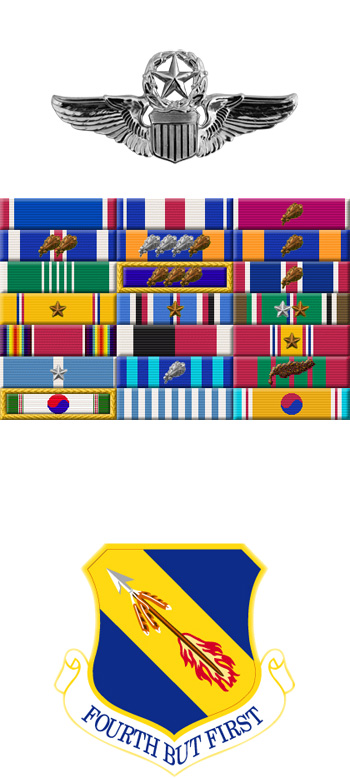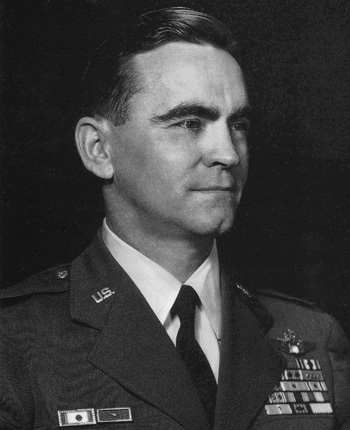
|
James K. Johnson |
 |
|||
| Rank, Service | ||||
Colonel O-6, U.S. Air Force |
||||
| Veteran of: | ||||
|
||||
| Tribute: | ||||
James Johnson was born on May 30, 1916, in Phoenix, Arizona. He entered the Aviation Cadet Program of the U.S. Army Air Corps on December 28, 1939, and was commissioned a 2d Lt and awarded his pilot wings at Kelly Field, Texas, on August 30, 1940. He then served in the Panama Canal Zone with the 43rd Pursuit Squadron until October 1943. Col Johnson served as Deputy Commander of the 404th Fighter-Bomber Group from November 1943 to October 1944, going with the group to England in April 1944, and then he became Commander of the 48th Fighter-Bomber Group, where he served until June 1945. During World War II, Col Johnson was credited with destroying 1 enemy aircraft in aerial combat while flying a P-47 Lightning. After World War II, he served as a Base Commander, Instructor Pilot, project officer at Ellington AFB, Texas, and Commander of the 3605th Navigation Training Group at Ellington AFB. He was Base Commander of Nellis AFB, Nevada, from September 1951 to October 1952, and then flew combat in Korea as the commander of the 4th Fighter Interceptor Wing from October 1952 to August 1953. While in Korea, Col Johnson was credited with the destruction of 10 more enemy aircraft in aerial combat plus 3 probables and 7 damaged, giving him a two-war total of 11 destroyed in the air. After Korea, he served with Headquarters U.S. Air Force at the Pentagon from September 1953 to September 1956, followed by service as commander of the 55th Strategic Reconnaissance Wing at Forbes AFB, Kansas, from September 1956 to August 1959. His next assignment was as Commander of the 3958th OE&T Group at Carswell AFB, Texas, from August 1959 to March 1960, and then as Commander of the B-58 Hustler equipped 43rd Bomb Wing at Carswell AFB from March 1960 to June 1961. Col Johnson was Director of Operations for the 19th Air Division, also at Carswell, from June to September 1961, and he then served as Director of Safety with Headquarters Tactical Air Command at Langley AFB, Virginia, from September 1961 until his retirement from the Air Force on November 30, 1963. James Johnson died on August 22, 1997, and was buried at Arlington National Cemetery. |
||||
|
||||

